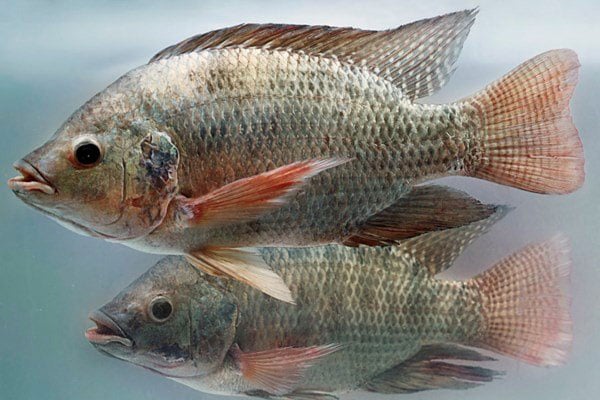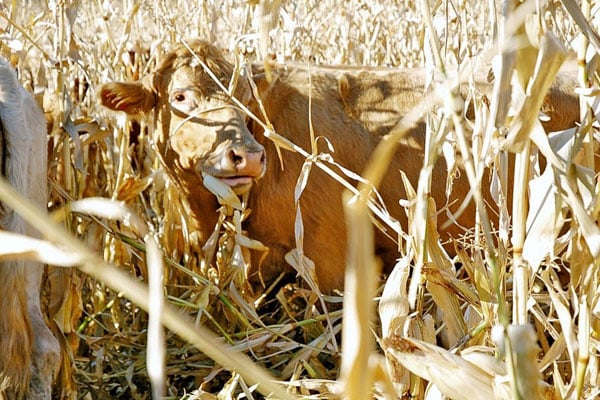Sexing and breeding in tilapia

Tilapia fish.
What you need to know:
- Information on vaccinating turkeys.
- Tips to follow tips to grow garlic.
My name is Bernard. I would like to know how sexing and breeding is done in the pond on fish like tilapia.
Dear Bernard
Sexing in tilapia is done in two ways, that is, manual hand sexing and hormonal sex reversal.
In hand sexing, sexual features distinguishing males from females are clear when fish is mature, and this occurs at about 10cm.
The males have two orifices; one is the urogenital opening and the other is the anus. Females have three orifices, the genital opening, the anus and the urinary orifice.
Manual sexing should be done early in the morning so that fish is not stressed by high water temperatures.
When breeding tilapia in fish ponds, brood fish is selected and stocked in the ratio of male to female of 1:3.
Fries are harvested from the pond every 15 to 21 days depending on the water temperatures, feeds and water quality aspects.
Under pond conditions, spawning or breeding does not normally occur because the final stimulus associated with a rise in water level and inundation of marginal areas does not happen.
However, they can be induced to spawn by hormonal treatment using pituitary glands from donor fish or synthetic hormones- (Answered by Carol Mutua of Egerton University)
###########################################
Vaccinating turkeys
An article on turkey rearing that appeared in the Seeds of Gold recently left out details on vaccines.
I have successfully managed to hatch poults three times by having the turkey hen sit on eggs for 28 days. In all the three cases, the hatchability rate was 100 percent.
l use the correct feeds and give Gumboro and Newcastle vaccines just as recommended for chickens. My challenges start when the poults are between eight and 10 weeks old since they begin dying one by one without showing any serious signs of illness. The only noted sign is that they start being less active on day one and lose appetite and within three to five days, they die. What could be the cause? Rosemary.
Dear Rosemary
This to me sounds like an infectious process with age predilection. Different poultry diseases may present similar signs (that of sick bird syndrome) and, therefore, it may be difficult to ascertain the specific disease process.
A better way of diagnosing this problem would be to carry out post-mortem on fresh dead carcasses to check for specific pathological pattern and lesions (this is only done by a trained and registered animal health professional).
Reducing diseases in a flock entails proper feeding, housing, general hygiene, biosecurity and vaccination. Turkeys are tolerant to common infections that affect chickens (and may act as reservoirs). Turkeys can be vaccinated against a number of diseases that include Newcastle, fowl cholera, haemorrhagic enteritis and fowl pox- (Answered by Carol Mutua of Egerton University)
Follow these tips to grow garlic
Garlic is a high value horticultural crop in the onion family. Farmers in most parts of the country can be able to grow it and considerably increase their income because garlic has a good local market.
It is mainly used as food flavouring and for medicinal purposes. Garlic has anti-feedant, insect stop feeding, bacterial, fungicidal, insecticidal, nematicidal and repellent properties.
Garlic is effective against a wide range of disease-causing organisms and insects at different stages in their life cycle.
This includes ants, aphids, armyworms, diamondback moth and other caterpillars such as the false codling moth, pulse beetle, whitefly, wireworm, beetle, mice, mites, moles, and termites as well as fungi bacteria and nematodes.
Garlic can kill beneficial insects as well. Therefore it should be used with caution. When growing garlic for pest control, it has been recommended to avoid use of large amounts of fertilisers.
This is because heavy doses of fertiliser reduce the concentration of the effective substances in the garlic. Very few farmers in Uganda grow garlic mainly due to lack of know-how and experience on its production.
Agronomy
Garlic requires a fertile, well drained, light soil. Clay soils should be avoided since they lead to poor bulb development. Soil pH should be between 5.5 to 6.8.
Deep soil cultivation is important to ensure rooting depth. Farmers should seek advice on the garlic varieties suited to local conditions to ensure they get good yields that meet market requirements.
Planting
Garlic is vegetatively propagated. That means that the farmer has to plant individual cloves separated from the main bulb.
Very small cloves should not be used. The larger the cloves, the more the space required for planting. The cloves should be planted in upright position.
Stored bulbs should be fumigated and continuously inspected to ensure they do not rot. Closer spacing within the rows is possible; but disease risks are also high when garlic is planted too closely; bulb formation is also affected when the cloves are near each other.
Garlic does well if well-composted manure is ploughed in before planting. Top dressing with liquid manure should be done regularly at the beginning of 6 - 8 weeks and increased during bulb formation. The field should be weed-free to ensure garlic does not compete for nutrients with weeds- By Charles Tabu




